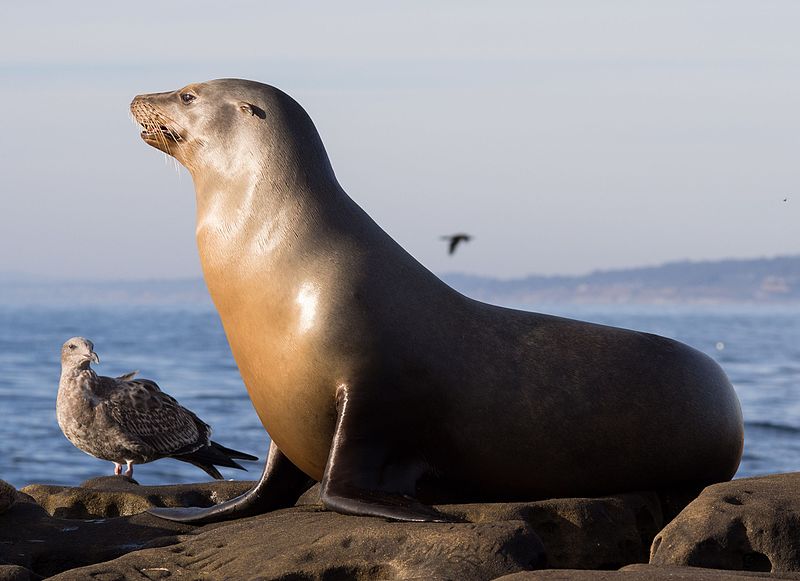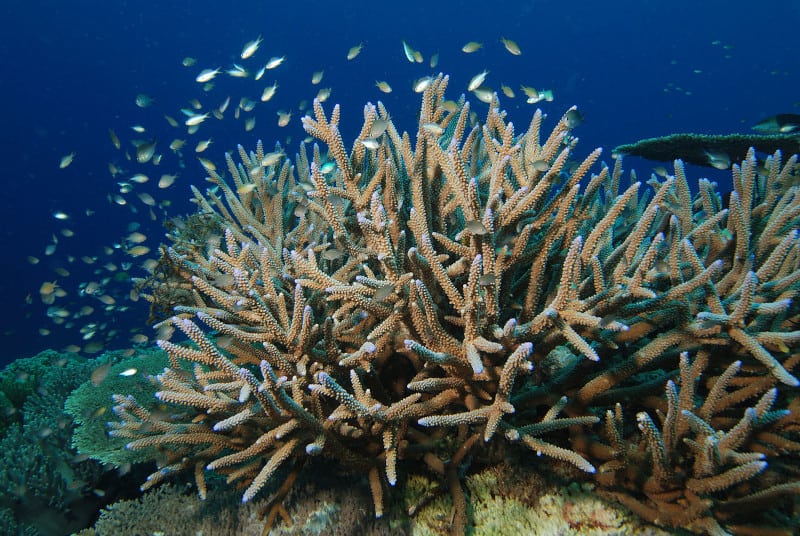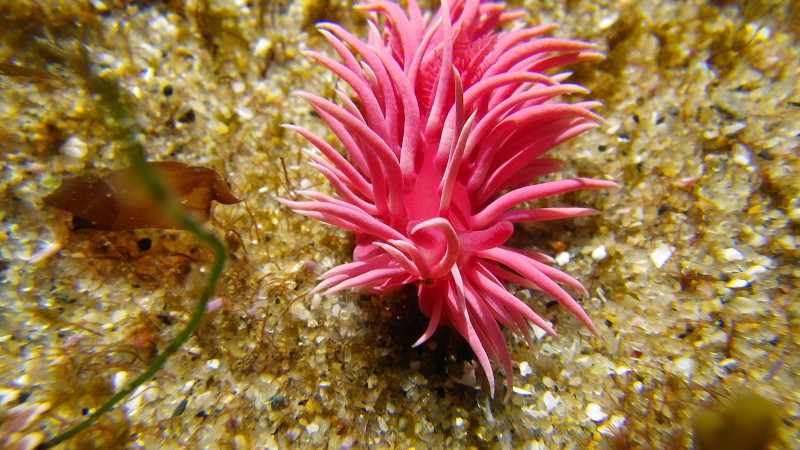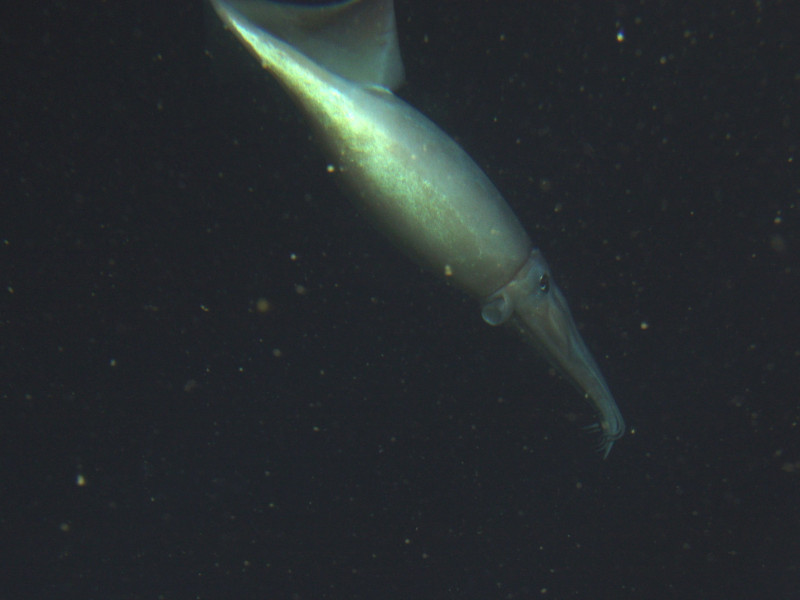Humboldt Squid Facts
- This remarkable creation of Nature and evolutionary processes most frequently goes by the common name of the Humboldt Squid. Yet, the amazing animal does have a few other general titles, too. These include the terms jumbo squid, jumbo flying squid, Pota, and Jibia.
- Within the scientific community, however, it’s perhaps far better known by its entirely technical moniker. Like so many such tags, though, that’s somewhat difficult for the layperson to pronounce. That’s because it holds the formal designation of Dosidicus gigas.
- That’s not the name it started out with, however. The Chilean priest and polymath first brought the creature to the attention of the scientific world in the year 1782. At that time, he named it after the genus of the cuttlefish. He then applied the epithet Sepia tunicata at that time.
- Later, in 1835, the French naturalist Alcide d’Orbigny renamed it Loligo gigas. Subsequently, in 1857, the Danish zoologist Japetus Steenstrup proposed the genus name Dosidicus. Eventually, in 1912, discoveries led to the taxonomic change to the one the creature holds currently.
- Sadly, researchers do not presently have sufficient data regarding either the current population numbers or trends surrounding the Humboldt Squid. The IUCN therefore temporarily lists the marvelous marine marvel as Data Deficient on its Red List of Threatened Species.
- The amazing animal nonetheless still faces the same multiple threats to its continued existence as a species as all forms of life on earth today, at least. These dangers include the closely related threats of habitat loss and ongoing climate change, as well as numerous others.
Related Articles



Humboldt Squid Physical Description
The rarely photographed Humboldt Squid typically captivates those individuals fortunate enough to encounter one of these wonders. Those individuals, typically divers or researchers, of course, find it impressive due to a variety of reasons. That’s true since it boasts several distinctive traits.
This wondrous cephalopod evolved as a fairly large example of its kind. Like many of its numerous brethren, it follows a common pattern in this regard. That’s because it displays a certain degree of the physiological characteristic of sexual dimorphism. But it does so to only a small degree.
On average, females attain a mean body length measuring up to 4.9 ft (1.5 m). These also weight as much as 110 lb (50 kg). Males, meanwhile, typically remain smaller. They rarely exceed 3.9 ft (1.2 m) in body length, and generally have correspondingly lighter body masses than the females.
This particular species of squid developed an extremely robust and comparatively elongated mantle. That feature also tapers to a relatively sharp point at the rear of the body. The mantle appears as extremely muscular and streamlined, aiding the animal in its powerful swimming capabilities.
The impressive creature’s also well known for its naturally evolved ability to change its coloring rapidly. When it does so, it most often flashes between various shades of red and white. Most researchers believe this ability to be used for the purposes of communication and camouflage.
The head of the incredible work of Nature and evolution also holds large, prominent eyes that provide excellent vision. A strong, sharp beak used to tear apart prey also appears. The beak’s surrounded by a buccal mass that includes a radula, a tongue-like organ with rows of teeth.
The intriguing Humboldt Squid additionally developed highly unique fins. Though relatively small in size, they’re nevertheless fully functional and located on the sides of the mantles. These fins the creature primarily utilizes for the purpose of maneuvering rather than for its propulsion.
It also possesses eight arms and two longer tentacles. The arms come equipped with two rows of suckers, each of these features having sharp, serrated rings, while the tentacles possess suckers only on their clubbed ends. These appendages the animal uses to grasp and hold onto its prey.
- Kingdom: Animalia
- Phylum: Mollusca
- Class: Cephalopoda
- Order: Oegopsida
- Family: Ommastrephidae
- Genus: Dosidicus
- Species: D. gigas
Humboldt Squid Distribution, Habitat, and Ecology
The fascinating Humboldt Squid developed as indigenous to a region of the marine waters of the globe that’s already known for its abundance of natural wonders. Intriguingly, however, that zone of habitation qualifies as simultaneously extensive and restricted, depending on perspective.
The fabulous cephalopd’s native to a very specific portion of the Eastern Pacific Ocean. It’s most commonly found along the coasts of North, Central, and South America. That range extends from the southern tip of Chile up to California, in the United States, located in North America.
In recent decades, though, scientific evidence indicates the possibility that it’s now beginning to expand its territory. That new range potentially extends as far north as the coastal waters of the state of Alaska, and even possibly as far south as just off the coast of the country of Argentina.
Like many of its relatives around the world, this animal demonstrates decidedly clear preferences regarding its choice of habitat. Accordingly, it typically inhabits what’s called the neritic zone, which is the relatively shallow part of the ocean above the drop-off of the continental shelf.
Yet, the remarkable mollusc also occasionally resides in significantly deeper waters as well. It’s sometimes seen at depths ranging from approximately 656 – 3,281 ft (200 – 1,000 m). Given its natural territorial range, the squid also obviously prefers temperate to tropical temperatures.
Understandably, the Humboldt Squid evolved a purely carnivorous diet. It’s also known for being an aggressive, highly efficient, and opportunistic feeder. A typical diet includes various fish, crustaceans, and other cephalopods. Common prey includes lanternfish, hake, and sardines.
It also migrates vertically, moving to deeper waters during the day and ascending to shallower waters at night to feed. This behavior’s apparently driven by prey availability and predator avoidance. It also sometimes forms large schools for both hunting efficiency and its protection.
Like its many kindred, it reproduces via spawning. Females lay up to several million eggs in gelatinous masses, which float in the water column. Following their hatching, juvenile squids grow quite rapidly, and their growth rates can be influenced by water temperature and food availability.
Sadly, this amazing creature has a comparatively short average lifespan of only about one or two years. Though considered a top predator itself, it also has its own share of natural threats to deal with. These include larger marine animals, such as sharks, sperm whales, and large fish.
Species Sharing Its Range



Check out our other articles on 5 Incredible Indian Ocean Species, Elk, Macquarie Island, Apple-of-Peru, Rose’s Ghost Frog, Indian Vulture, Epirus Dancing Grasshopper, Orinoco Crocodile










Leave a Reply